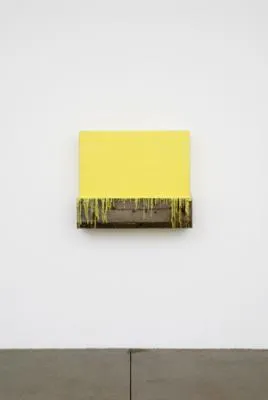
Johannes Girardoni: “Light Matters” at PDX Contemporary Art
It’s perhaps best to start in the back corner of the second gallery devoted to Johannes Girardoni’s “Light Matters” at PDX Contemporary Art. It is there that Dripbox - Yellow White is installed in a small white alcove. It is there that the reflection of light bouncing off the butter yellow wax thickly coating the rectangular volume on a rough, grey wood box subtly colors the white of the walls and ceiling as if Girardoni had captured the scope of the program of a Carlos Cruz-Diaz or James Turrell and embodied it in a sculptural object. Dripbox - Yellow White demonstrates the power of light interacting with pigment: an effect highlighted in the series of works—made of thick, monochromatic beeswax poured over weathered wood forms including curved trough, block and gate—shown in the first gallery under more conventional circumstances, as object rather than installation. The rough nature of the wood and the sloppy drips of the wax smartly play against the smooth wax surfaces’ visual legacy of finish fetish-ism. With absolutely nothing in common with precious encaustic painting but the delicious smell of the beeswax, Girardoni seems to ask, what if we took most of the painting out of painting and most of the sculpture out of sculpture? What would remain? As an endpoint, or perhaps naked counterpoint to the wax-drenched forms, Girardoni leans a wood frame against one wall, letting the gallery lighting complete the shadowed geometry of the piece to serve as a stark reminder of the apparatus of visual perception and the role light plays in it all.
A second series, Exposed Icon, consists of large-scale photos of the flipside of advertising billboards in desert and city, as if to point out their ubiquity while refusing to consume their visual pitches. The images are layered with digitally created double exposures; the ghosted second images offset enough to make one feel as though one’s eyes are crossing. These images are overlayed with screened-back blocks of color and painted forms that echo those of the billboard’s outlines, transforming oddball roadside photos into architectural studies in form.
—LISA RADON